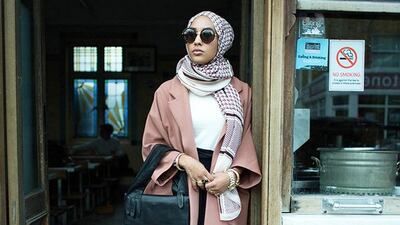In 1994, Indian model Aishwarya Rai won the title of Miss World, 28 years after Reita Faria, the last Indian, won the title. Aishwarya’s ascent onto the global beauty platform put focus on Indian beauty, and winners from India followed in quick succession – in 1997, 1999 and 2000.
The year of Aishwarya’s success was also the year the global beauty brand L’Oreal entered the Indian market. The company was clearly able to identify the consumer trend as it recognised the untapped potential of Indian women in terms of global brands and extended the focus on beauty brands beyond the western world.
Over the past 18 months, there’s been a similar feeling about Muslim women. It’s an untapped market, perfect for any business wanting to expand. The only difference is that this time it’s not about a new geographical area, but a new identity and mindset. These young Muslim women from around the world have been seeking to reflect their modern identity through global brands.
Last year, DKNY ran a successful Ramadan fashion campaign in the Middle East. This year Uniqlo, the Japanese casual wear designer, manufacturer and retailer, launched a product designed by a Muslim. Targeted at women in Malaysia, it was advertised by the global pop star Yuna. And last month global fashion giant H&M ran a campaign featuring a Muslim woman in a headscarf.
The media response to her presence in the ad – alongside more than 60 others who brought to life the slogan “There are no rules in fashion” – was so energetic that the model herself was surprised. Muslim women commonly feature in advertising campaigns in the Middle East and Muslim countries in Asia. But now a change is taking place as Muslim women are increasingly visible in campaigns of western brands and in western countries.
It’s an exciting development for young Muslim women around the world who often feel excluded from the mainstream global fashion scene to see themselves reflected in the world of fashion. They yearned for a faithful identity and modesty reflected back at them.
There are paradoxes at the heart of Muslim fashion that have yet to be ironed out. There’s a tension among them about being well-presented, beautiful even, while at the same time being modest. Fashion-conscious young Muslim women want to remain up to date, but they don’t want to be wasteful and extravagant. Although these women take pride in self-expression, they try to do so without making a deliberate or pretentious display of their abilities or accomplishments. They are aware of their value but they respect fair trade and sustainability.
The H&M campaign comes at a pivotal juncture in global fashion, and embracing Muslim women consumers may well become a central plank of this reimagining.
Muslim women’s emphasis on modesty and complete avoidance of sexualisation of their bodies break with the current wisdom about women’s fashion. But in tackling these challenges to better serve this new Muslim consumer, the fashion industry might find some answers. Or, as H&M might say, rules are there to be broken.
Shelina Zahra Janmohamed is the author of Love in a Headscarf and blogs at www. spirit21.co.uk

